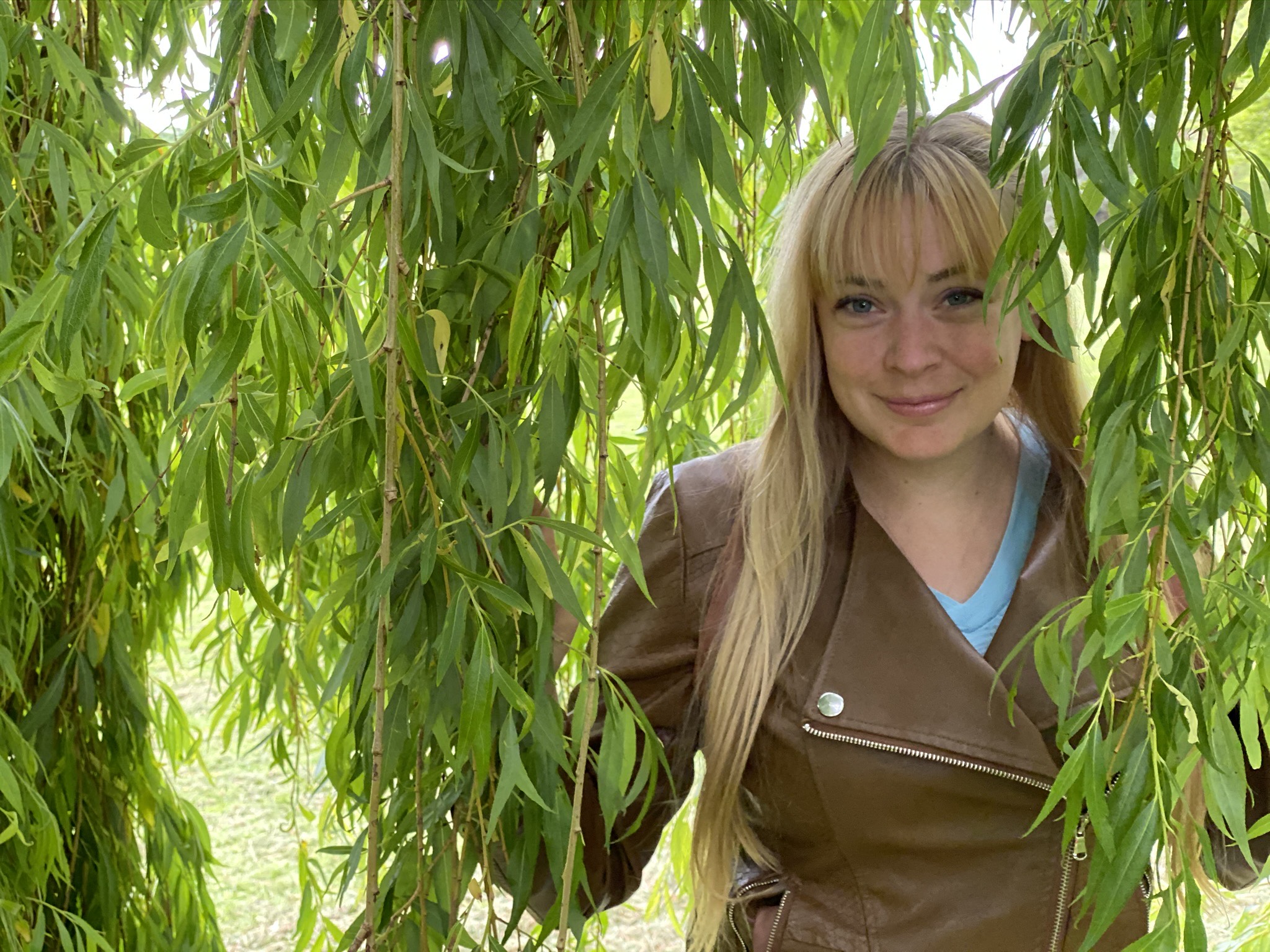I’ve lived with type 1 diabetes (T1D) for 49 years, and this past year the ground feels a bit shakier under my feet. I have discovered a second truth about living with diabetes.
The first was the one I wrote about 4 years ago on the HuffPost: “My whole life, all day, all night, every day, and each night is about keeping my blood sugar between the red and yellow lines [on my continuous glucose monitor].”
My new truth is: No matter how hard you work at this, no matter how well you manage your blood sugar, take your insulin, even correction doses, keep your supplies stocked, keep up with your doctor visits, you may still, just because of time, experience not necessarily major complications of diabetes, but enough minor complications to make you want to throw yourself under a bus, or out the window, or just feel really sad. That said, please don’t. I do know that the sun will shine again.
Since COVID-19 has now brought “long-haulers” into the lexicon, I suppose this is a long-hauler’s report of where I am right now, here on the eve of my Joslin Diabetes 50-year medal.
About 8 months ago, I began to have a succession of diabetes ailments, even though over the past two decades I’ve managed my diabetes extremely well, over the past several years brilliantly.
These ailments have worn at me physically and emotionally, and maybe even more injurious, they have upended my sense of myself. They remind me that no matter how well things are going, no matter how well I was doing, I really do have a chronic, progressive illness.
I felt compelled to write this as a way to right me, and to add to the scant literature on what it’s like to live with type 1 diabetes for decades.
As you read this, however, know that if you are earlier in your journey with diabetes than me, you have, and will continue to, benefit from the technology and information I didn’t have, and the more that is coming.
Or if you have lived with T1D a long time like me, maybe it’s nice to hear someone confirm what you’ve experienced.
The big secret: It’s not about the shots
We who live with T1D all learn pretty quickly (SHOCKER HERE): It’s not about the shots. It is about the 180 decisions per dayTrusted Source medical journals say we make to manage our blood sugar. It is about how this daily decision-making puts our nervous systems into constant hypervigilance.
It is about fearing the major complications I was told in my hospital bed at age 18 that would befall me: heart attack, kidney disease, amputation, blindness. Scared silly for weeks afterward, I went to sleep opening and closing my eyes, testing what the world would be like if I could no longer see it. Need I tell you I was an art major?
It’s almost ironic, when we talk about a chronic illness, that we rarely talk about the even keel times and how complacent one becomes when things are going well. That’s exactly why, when a few sharp jabs came along, I was thrown and experienced unexpected, profound grief.
The underbelly of T1D, in the words of poet Carl Sandburg, creeps in on “little cat feet” — quietly, surreptitiously. One day you awake from your complacency noticing a little new health insult and your mind whirls, ‘How can this be happening?’, ‘What will yet come to steal my joy, equanimity, health?
The sad truth of additional ailments
There’s no getting around the fact that people who live with T1D over time experience certain disorders at higher rates than the average population.
When my thumb began popping 3 months ago, I posted on Facebook about it, asking who had also experienced trigger thumb? It garnered a small tsunami of replies: Dozens of peers who have lived with T1D dozens of years shared about their trigger fingers. And their Dupuytren’s contractures. And their stiff hand syndromes.
Had I asked for other conditions accumulated over the years, I would have heard about their Charcot osteoarthropathy, their retinopathy and neuropathy, their diabetic amyotrophy and their fibromyalgia.
People who live with T1D over time experience muscle, musculoskeletalTrusted Source and joint disorders at increased rates compared to the general population.
But it was not the pain of my trigger thumb alone, while annoying and uncomfortable, that caused my house of cards to collapse. Out of the blue, I developed psoriasis, a third auto immune condition behind my T1D and Hashimoto’s disease.
Then came a mysterious itch in the center of my back that seems to be nerve-related. Then howl-worthy, frequent cramping in my feet. Even turning in bed or stretching in the morning set off a cramp. This was accompanied by tingling in both calves that I have experienced on and off since I was diagnosed at 18. Now, however, there appeared to be no off. The nerves in my calves are vibrating as I write this.
My health identity is unsteady
I no longer experience myself as the dutiful patient, who, working hard at keeping my blood sugar in range, has already experienced all the complications I’m going to get — two frozen shoulders 15 years apart, occasional tingling in my calves, and hearing loss.
My recent heartbreak — you may think I’m crazy — is actually the loss of a certain carefreeness. The expectation that if I do good, I’ll get good.
Now I have been reminded, as each complication reminds us, that I am vulnerable to a multitude of breakdowns, each one taking a small, but life changing, bite out of me. The knowing, that likely more insults will come no matter what I do, scares me.
A month ago, standing in my kitchen, it crossed my mind that were I to fill out that form you do in the doctor’s office asking how your general health is, I would have ticked “good” as I always do. Yet, were I to fill it out honestly today, I would have to tick “poor” or “fair.”
I should mention, I am aware that the stress of living through a pandemic has likely contributed to my current state of health. I do not blame diabetes for all of it — still, there it is.
When we were engaged, I told my husband-to-be, “You can back out of this marriage and I won’t hold it against you. I cannot guarantee what life will be like living with someone who has type 1 diabetes.” Now, 20 years into our marriage, it’s becoming true.
Anyone who knows me, or the man who refused to listen to my tearful argument and married me anyway, knows that no matter what comes, he will never regret his decision. Lucky me, but I am sad that these past several months I keep telling him something else that is wrong with my body.
Why sharing matters
I see my job as a chronicler. I am ahead, in years, of many of my friends and peers with this disease, and not all of us will arrive at this destination.
And here’s a just as important part of the story: With treatment, my trigger thumb went away, as did my psoriasis, and mystery itch. The leg cramps and tingling have once again lessened, and I have no idea why. But I’ve also made an appointment with a neurologist to see what more I can learn or do.
When I interviewed people early in my diabetes work, many young people said they appreciated that getting T1D made them more mature and compassionate. Maybe weathering decades with diabetes’ ups and downs has made me more resilient. That’s a good thing.
And still, I am an optimist. I am bouncing back as things begin to improve.
All told, I believe that being on blood sugar patrol 24/7 deserves more respect from health professionals and more doses of compassion from and for ourselves. And I believe we should be speaking into this void of what it’s like to live a long time with type 1 diabetes; children grow up.
That said, it is not lost on me that many of us are here to share what it’s like to live a ‘long life with diabetes.’ And that is very much in the plus column.
How I stay resilient day to day
Since I do believe diabetes has made me more resilient, here’s how I stay, and get, myself righted when things are tough.
I seek medical attention as needed and, like a dog with a bone, I keep going til I have the best answer or treatment.
I do deep research online for whatever I’m trying to solve; information calms my waters.
I share my feelings with my husband and friends whom I know are supportive and will understand.
I look at what I have — health, friends, loved ones, comfort, pleasures like eating a good meal — and I am grateful.
I go back to the tried and true things that work for me in my everyday diabetes management: routine, low carb eating, daily walks.
I have a spiritual practice of qigong and meditation. Keeping them up when all feels shaky is the key.
I burrow into pure escapist entertainment like a multi-season Scandinavian crime noir series on Netflix and only come up to eat and go to the bathroom. Sometimes not even that.
I remind myself that dark clouds come and they go, and I do not know the future. So, I envision one that pleases me where my issues are resolved or manageable.
Riva Greenberg
Riva Greenberg is a health researcher, health coach, diabetes author and activist. Her work is dedicated to helping people with diabetes and health professionals work collaboratively in a way that helps both flourish. She has written three books and blogs at DiabetesStories.













